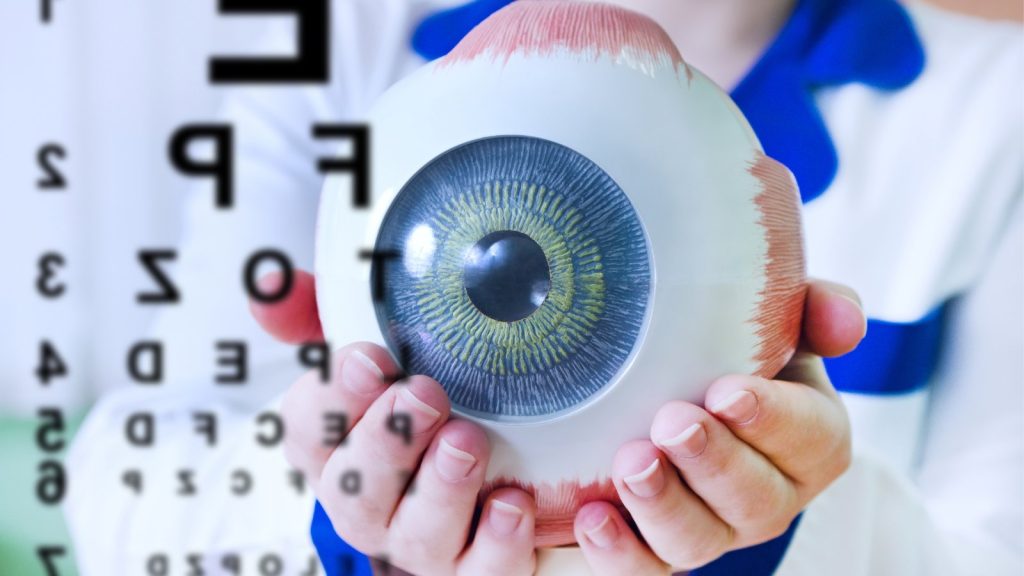Recognizing the Different Eye Issues Treated by Specialized Eye Treatment Professionals
In the realm of eye treatment, specialized experts play an essential function in detecting and treating a vast array of eye conditions. From typical refractive mistakes that influence vision clearness to age-related problems that posture obstacles as we age, the expertise of these professionals encompasses handling vision-threatening conditions and complex corneal problems. The intricacies of neurological eye problems existing distinct difficulties that require specialized care. As we start this exploration of the various eye conditions attended to by specialized eye treatment professionals, it comes to be obvious that the detailed web of ocular health holds a myriad of fascinating understandings waiting to be revealed.
Typical Refractive Mistakes
Refractive mistakes prevail aesthetic problems triggered by an imperfection in the eye's ability to properly concentrate light, causing obscured vision. The most common kinds of refractive errors include myopia (nearsightedness), hyperopia (farsightedness), astigmatism, and presbyopia. Nearsightedness occurs when the eyeball is too lengthy or the cornea is too bent, causing distant challenge show up blurry. Hyperopia, on the other hand, happens when the eyeball is as well short or the cornea is also flat, causing neighboring items being out of emphasis. Astigmatism is characterized by an irregularly shaped cornea, resulting in distorted or obscured vision whatsoever ranges. Presbyopia is an age-related problem where the lens loses its flexibility, making it hard to concentrate on close objects.
These refractive errors can be fixed through numerous methods, including eyeglasses, get in touch with lenses, or refractive surgical treatment. Eye treatment experts play an essential role in identifying and managing refractive errors to help people attain more clear vision and improve their lifestyle.
Age-Related Eye Problems
As people age, their eyes might be prone to a variety of problems past refractive errors that can affect their vision and overall ocular health. Age-related eye problems are common and can considerably influence the lifestyle for older grownups. Among one of the most common age-related eye problems is age-related macular degeneration (AMD), a disease that triggers central vision loss and can make activities like analysis and driving difficult. refractive surgeries in al. Cataracts, another usual problem among older people, create clouding of the eye's natural lens, leading to blurred vision. Glaucoma, characterized by damages to the optic nerve, is also much more widespread with age and can result in outer vision loss or loss of sight if left untreated. In addition, presbyopia, a problem where the eye's lens sheds flexibility, is an all-natural part of aging and brings about trouble concentrating on close things. Routine eye exams with specialized eye care specialists are important for early discovery and administration of these age-related eye problems to protect vision and preserve eye wellness as individuals age.
Vision-Threatening Diseases
Vision-threatening conditions encompass a variety of severe ocular problems that have the possible to dramatically impact a person's sight and total visual function. These conditions posture a threat of irreversible vision loss if not without delay diagnosed and dealt with by specialized eye care experts. Some usual vision-threatening diseases include glaucoma, diabetic retinopathy, age-related macular degeneration (AMD), and retinal detachment.
Glaucoma is a team of eye problems that harm the optic nerve, typically because of high intraocular pressure, causing outer vision loss and potential blindness if left unattended. Diabetic retinopathy is a difficulty of diabetic issues that affects blood vessels in the best site retina, triggering vision impairment or blindness. AMD is a dynamic condition influencing the macula, leading to central vision loss. Retinal detachment takes place when the retina separates from its underlying cells, causing unexpected vision loss that needs immediate medical interest (refractive surgeries in al).
Very early detection, routine eye tests, and prompt treatment are critical in taking care of vision-threatening illness to protect sight and keep quality of life. Specialized eye care professionals play an important role in diagnosing, dealing with, and handling these conditions to prevent irreparable vision loss.

Corneal Conditions
Corneal problems encompass a spectrum of problems that affect the clear redirected here front component of the eye, called the cornea. These problems can cause discomfort, visual disturbances, and in serious cases, vision loss. One common corneal disorder is keratoconus, where the cornea thins and bulges outward right into a cone shape, creating astigmatism and blurred vision. Corneal dystrophies, such as Fuchs' dystrophy, cause gradual vision loss because of unusual down payments in the cornea. Corneal abrasions, typically triggered by injury or international items, can lead to pain, soreness, and level of sensitivity to light. In addition, infections like keratitis can inflame the cornea, possibly causing scarring and vision problems if not immediately dealt with. Therapy for corneal disorders differs depending upon the particular condition yet may consist of medicines, get in touch with lenses, or in serious situations, corneal transplants. Routine eye tests are vital for early discovery and monitoring of corneal problems to preserve vision and eye wellness.
Neurological Eye Problems
Neurological eye problems entail problems that affect the link in between the eyes and the mind, influencing visual handling and total eye feature. These problems can show up in numerous ways, influencing vision, eye activities, and also the sychronisation in between the eyes. One typical neurological eye condition is optic neuritis, characterized by swelling of the optic nerve resulting in vision loss, shade desaturation, and pain with eye motion.
Another considerable condition is nystagmus, where the eyes make repeated, uncontrolled activities, affecting aesthetic acuity and deepness understanding. Additionally, problems like amblyopia, usually described as "lazy eye," result from uncommon aesthetic development in early childhood years, causing reduced vision in one eye.
Neurological eye problems call for specific treatment from specialists like neuro-ophthalmologists that have proficiency in both neurology and ophthalmology. Diagnosis frequently entails a comprehensive eye evaluation, imaging studies, and partnership with neurologists to resolve the underlying neurological problems impacting the aesthetic system. Treatment techniques can include medication, vision treatment, or in serious cases, medical interventions to handle these complex problems properly.

Verdict
Finally, specialized eye treatment professionals deal with a vast array of eye problems, including usual click to read more refractive errors, age-related eye problems, vision-threatening diseases, corneal problems, and neurological eye problems - refractive surgeries in al. By recognizing these different conditions and looking for ideal therapy from eye treatment specialists, individuals can keep optimum eye wellness and vision. It is very important to prioritize routine eye assessments and comply with advised therapy plans to preserve and protect one's vision for the future